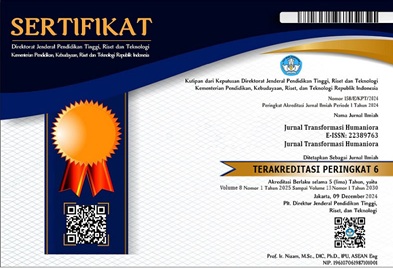SERVICE INNOVATION PELAKU PARIWISATA PADA OBJEK DAYA TARIK WISATA (ODTW) FAVORIT DI KABUPATEN MANGGARAI BARAT
Kata Kunci:
Inovasi Layanan, Pariwisata, Manggarai Barat, Daya Tarik, Wisata BerkelanjutanAbstrak
Pariwisata merupakan salah satu sektor unggulan dalam pembangunan daerah karena mampu mendorong pertumbuhan ekonomi, membuka lapangan kerja, serta memperkuat identitas budaya lokal. Kabupaten Manggarai Barat di Nusa Tenggara Timur dikenal sebagai destinasi wisata favorit, terutama dengan keberadaan Taman Nasional Komodo, Pulau Padar, Pulau Rinca, dan Labuan Bajo. Pesatnya pertumbuhan sektor ini menuntut pelaku pariwisata untuk terus melakukan inovasi layanan (service innovation) agar mampu memenuhi kebutuhan wisatawan yang semakin beragam dan kompleks. Penelitian ini bertujuan untuk menganalisis bentuk-bentuk inovasi layanan yang diterapkan oleh pelaku pariwisata pada objek daya tarik wisata (ODTW) favorit di Kabupaten Manggarai Barat serta mengidentifikasi faktor-faktor yang mempengaruhinya. Penelitian menggunakan pendekatan kualitatif. Data diperoleh melalui observasi, wawancara mendalam, dan dokumentasi terhadap pelaku pariwisata, seperti pemandu wisata, pengelola kapal wisata, karyawan hotel, pelaku UMKM, serta wisatawan domestik maupun mancanegara. Analisis data dilakukan dengan model interaktif Miles, Huberman, dan Saldana. Hasil penelitian menunjukkan bahwa pelaku pariwisata telah menerapkan empat dimensi inovasi layanan menurut teori Den Hertog, yaitu service concept, customer interface, service development and delivery, serta technological options. Inovasi yang dikembangkan mencakup penyediaan layanan berbasis pengalaman (experiential tourism), integrasi nilai budaya lokal dalam paket wisata, pemanfaatan teknologi digital untuk reservasi dan promosi, serta penerapan prinsip keberlanjutan lingkungan melalui konsep ekowisata. Faktor pendorong utama inovasi adalah kualitas sumber daya manusia, pemanfaatan teknologi informasi, kolaborasi antar pelaku pariwisata, serta dukungan kebijakan dari pemerintah daerah. Penelitian ini menyimpulkan bahwa inovasi layanan tidak hanya meningkatkan kepuasan wisatawan, tetapi juga memperkuat daya saing pariwisata Manggarai Barat di tingkat global. Selain itu, inovasi terbukti berkontribusi terhadap pelestarian budaya lokal, peningkatan kesejahteraan masyarakat, serta pengembangan pariwisata berkelanjutan yang memberikan manfaat ekonomi, sosial, dan lingkungan bagi daerah.
Tourism is one of the leading sectors in regional development as it contributes to economic growth, creates employment opportunities, and strengthens local cultural identity. West Manggarai Regency in East Nusa Tenggara is recognized as a favorite tourist destination, particularly with the presence of Komodo National Park, Padar Island, Rinca Island, and Labuan Bajo. The rapid growth of this sector requires tourism actors to continuously implement service innovations to meet the increasingly diverse and complex needs of tourists. This study aims to analyze the forms of service innovation applied by tourism actors at popular tourist attractions (ODTW) in West Manggarai Regency and to identify the factors influencing them. This research employed a qualitative approach. Data were collected through observation, in-depth interviews, and documentation involving tourism actors such as tour guides, boat operators, hotel employees, MSME owners, as well as domestic and international tourists. Data analysis was conducted using the interactive model of Miles, Huberman, and Saldana. The findings indicate that tourism actors have implemented the four dimensions of service innovation as proposed by Den Hertog, namely service concept, customer interface, service development and delivery, and technological options. The innovations developed include the provision of experiential tourism services, the integration of local cultural values into tour packages, the utilization of digital technology for reservations and promotions, as well as the application of environmental sustainability principles through eco-tourism practices. The main driving factors of innovation are the quality of human resources, the use of information technology, collaboration among tourism actors, and government policy support. This study concludes that service innovation not only enhances tourist satisfaction but also strengthens the global competitiveness of West Manggarai tourism. Moreover, innovation contributes to the preservation of local culture, the improvement of community welfare, and the development of sustainable tourism that provides economic, social, and environmental benefits for the region.





